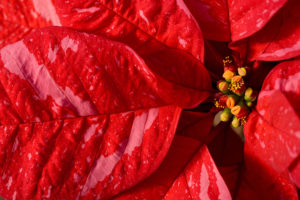Caring for Your Poinsettia
go.ncsu.edu/readext?638391
en Español / em Português
El inglés es el idioma de control de esta página. En la medida en que haya algún conflicto entre la traducción al inglés y la traducción, el inglés prevalece.
Al hacer clic en el enlace de traducción se activa un servicio de traducción gratuito para convertir la página al español. Al igual que con cualquier traducción por Internet, la conversión no es sensible al contexto y puede que no traduzca el texto en su significado original. NC State Extension no garantiza la exactitud del texto traducido. Por favor, tenga en cuenta que algunas aplicaciones y/o servicios pueden no funcionar como se espera cuando se traducen.
Português
Inglês é o idioma de controle desta página. Na medida que haja algum conflito entre o texto original em Inglês e a tradução, o Inglês prevalece.
Ao clicar no link de tradução, um serviço gratuito de tradução será ativado para converter a página para o Português. Como em qualquer tradução pela internet, a conversão não é sensivel ao contexto e pode não ocorrer a tradução para o significado orginal. O serviço de Extensão da Carolina do Norte (NC State Extension) não garante a exatidão do texto traduzido. Por favor, observe que algumas funções ou serviços podem não funcionar como esperado após a tradução.
English
English is the controlling language of this page. To the extent there is any conflict between the English text and the translation, English controls.
Clicking on the translation link activates a free translation service to convert the page to Spanish. As with any Internet translation, the conversion is not context-sensitive and may not translate the text to its original meaning. NC State Extension does not guarantee the accuracy of the translated text. Please note that some applications and/or services may not function as expected when translated.
Collapse ▲The poinsettia is a native of Mexico, that is actually a perennial there. It is definitely not perennial here because of our colder climate. So, it should not surprise us that it needs a little “helping hand” to ensure longer, fuller life in our indoor environments and colder climate.
Here are some tips for handling the beautiful poinsettia that you have just purchased.
- Protect the plant from cold and wind as you move it to your car and into your home.
- Do not leave the plant in a parked car during cold weather.
- Place poinsettias in your home in bright light (but not direct sun). They have been grown in greenhouses at 60-70°F with high humidity and maximum sunlight. The closer your home comes to these conditions, the better results you will have. Ideally, your home would be 70°F during the day, and the temperature would be lowered to 60°F at night.
- Keep them out of drafts.
- Do not let the plant completely dry out. Water when the soil surface feels slightly dry, water with 1-2 cups of tepid water, but do not allow water to accumulate in the tray below the plant or inside the foil wrapper. Wait five minutes after watering and then empty any excess water remaining.
- There is no need to fertilize this plant unless you are planning to keep it for a number of years beyond this holiday season.
- It is very difficult to reproduce the beautiful plant you have right now. It is best to discard your plant at the end of the season (composting it is a great idea) and buy a fresh plant next season.
Happy Holidays!





